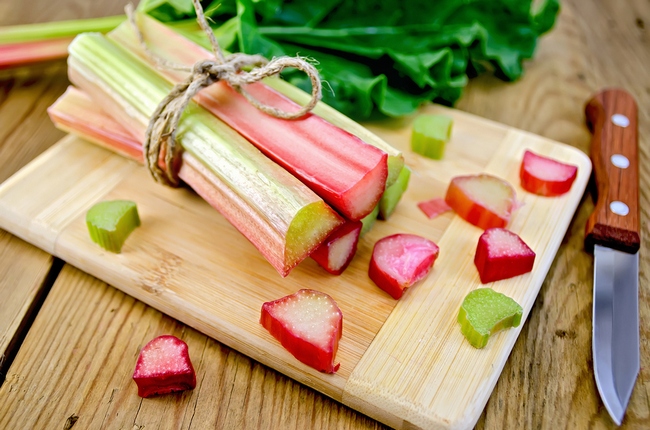- Make It Yourself Lavender Heart-Shaped Bath Bombs!
- 20 Things You Never Knew About “Down There”
- 12 Best Foods For Those Suffering From Arthritis Pain
- 12 Personal Hygiene Mistakes Almost Everyone Makes (Mom Never Told You About #4!)
- 15 Medicinal Plants And Herbs From The Cherokee People
- 12 Mind-Blowing Benefits Of Drinking Coconut Water During Pregnancy
- 12 Outstanding Winter Foods That Won’t Fatten You Up Like A Christmas Turkey
Rhubarb: Why Is It Not On Your Table Yet?

Photo credit: bigstock
Rhubarb grows wild in many backyards and gardens, and many don’t realize that the stem of the plant is edible, and actually very delicious. The leaves, however, are not edible as they have very high levels of oxalic acid and are toxic to the human body.
Rhubarb stems can be eaten raw, though many find that it is sour. Some recipes suggest soaking the raw stems in honey to sweeten them up before eating raw. Like any plant, heating during cooking does damage some of rhubarb’s health properties. Cooking rhubarb does turn it into a deliciously sweet treat, though. Rhubarb contains numerous health benefits, and is so much more than a pretty garden decoration.
The Health Benefits of Rhubarb
- Rhubarb is very high in vitamin K, an important fat soluble vitamin that has been shown to boost brain health. It also contains vitamins C and A, as well as the B vitamin folate.
- Rhubarb has loads of fiber which is why ancient eastern medicine used it to treat constipation and indiges
- Rhubarb is high in calcium, actually containing as much calcium in one cooked cup as one cup of milk.
- Rhubarb was also used as a poultice to treat fevers and inflammation on the body.
- It is a manganese powerhouse, and also has the minerals iron, phosphorus and potassium.
- Rhubarb shows promise for treating both inflammatory and viral infections, as well as digestive ulcers and other stomach issues.
The Cons of Rhubarb
Rhubarb is high oxalates which is an issue for those with compromised kidney function. If you notice inflammation in your body after consuming rhubarb and other high oxalate foods (nuts, spinach, beets, potatoes), stop consuming and detoxify your kidney and liver before consuming these foods again.
Rhubarb is used in fruit salads, pies, crisps, jams, and nearly every baked good. Anywhere that you may use strawberry, you could substitute rhubarb.
Cooking with Rhubarb
Though most prefer rhubarb cooked, as it becomes very sweet, nutrients can be lost when cooked. Consider trying it raw in a fruit salad, such as: chopped rhubarb, chopped apples, two tablespoons of honey or stevia, and a dash of salt.
Cooked rhubarb is famous in baked goods, such as strawberry pies or crumbles. You can also add it to your jams and jelly recipes, too. Taste of Home found the Top 10 Rhubarb Recipes, and they’re all to die for. Pick one out, and give it a try this spring.
Should you eat rhubarb?
The answer is definitely yes, just not the leaves! This wild plant can be found in ditches, gardens, parks, and your backyard, and delivers essential vitamins and minerals. It’s a southern staple in sweet dessert dishes, and should be on your table, too.

































